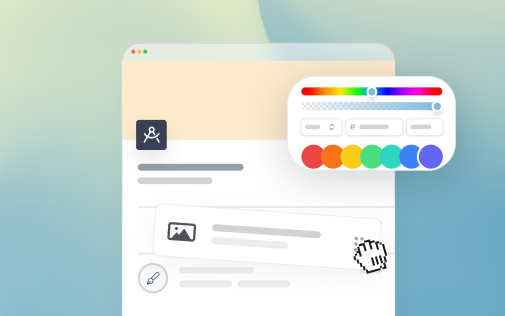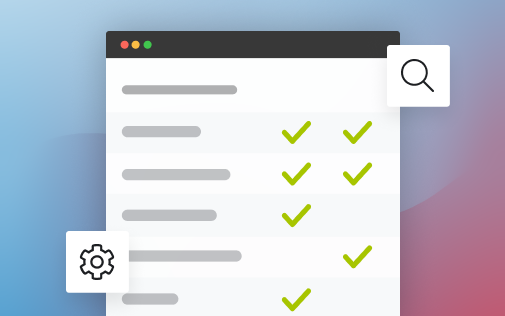Why it is important to design a targeted career page
A professionally designed careers page is a central component of recruitment. It conveys the first impression of your corporate culture and is often the decisive point of contact for potential applicants. If you want to attract talent, you should pay particular attention to this page.
Five advantages of a professional career page
- Stronger employer brand
A well thought-out careers page strengthens your position as an attractive company in the competition for skilled workers.
- More suitable applicants
Clear information and simple application processes improve the candidate experience and thus increase the number of qualified applicants.
- More efficient applicant management
Integration into the applicant management system allows processes to be automated and resources to be deployed in a targeted manner.
- Greater visibility on the Internet
A search engine-optimized career page ensures that your company is more visible in relevant searches – potential applicants will find your offers faster and without detours via external job portals.
- Increased credibility
Authentic insights into the company create trust among potential applicants.
Content that convinces
When designing a career page, it is important to create content that informs and appeals emotionally. Key information such as current vacancies, the application process and contact options should be presented clearly and comprehensibly.
Show what your company stands for: Values, visions, team culture and benefits are important factors that appeal to talent. Real insights into the company are particularly effective – e.g. through videos, employee testimonials or pictures of the workplace. Use this content to convey your corporate culture authentically.
Transparency is also important: explain the application process, formulate clear expectations and show applicants what to expect. Clear language and a clear structure help to build trust.
Designing a career page: Example of an optimal structure
A well-designed careers page follows a clear, user-friendly structure. The following elements have proven to be particularly effective in practice:
- Getting started: Why work for us?
A short, authentic introductory text with your employer message – focused on your values, vision and corporate culture. - Your benefits at a glance
A clear presentation of your benefits (e.g. flexible working hours, further training, team events) – visualized with icons or images. - Insights into the team
Photos, videos or quotes from employees convey a credible picture of everyday working life and strengthen trust. - Open vacancies
Current jobs with filter options by location or function – directly linked to your applicant management tool or an application form. - Application made easy
Brief explanation of the application process and simple, mobile-optimized application options. - Frequently Asked Questions (FAQ)
Answers to typical questions about applying, joining the company, working time models or development opportunities. - Contact area
HR team, future manager or, in the case of apprentices and trainees, current apprentice as contact person – each with photo, feature and contact details - Conclude with a “Call to Action”
Clear call to action, e.g. “Apply now”, “Send unsolicited application” or “Discover more insights”.
How convincing is your careers page? Take the free check now.
Further tips for a successful careers page
- Mobile optimization: Your career site should work perfectly on all devices – many applicants use smartphones.
- Fast loading times: Long loading times lead to bounces. Optimize images and technical processes for good performance.
- Clear navigation: A logical page structure and clearly visible call-to-actions guide users directly to the application. Organize content clearly, e.g. with separate areas for training and specialist positions. The structure should be geared towards the needs of applicants – not internal departments.
- Application form or connection to applicant management: Use an online application form or integrate your applicant management tool to process applications efficiently.
- GDPR and FADP compliant: Ensure the protection of personal data – e.g. through secure forms and clear data protection notices. You can find more information in the article“Data protection in recruitment”.
- Integrate tracking and analysis: Use web analysis tools such as Google Analytics or Matomo to measure click paths, dwell time and bounce rates. This allows you to see which content and forms work – and where there is potential for optimization.
Conclusion: Designing a career page
A well-designed careers site is a key success factor in modern recruitment. It impresses with clear content, technical user-friendliness and a strong employer brand. With a professional implementation, a meaningful connection to your applicant management software and authentic insights into your company, you create the basis for more suitable applications. Those who invest in a convincing career site will attract better talent in the long term.
Questions & answers: Designing a career page
Why is a well-designed careers page so important?
A well thought-out career site strengthens your employer brand, communicates your corporate culture and increases the likelihood of qualified applicants through clear content and user-friendliness.
What content should not be missing on a career page under any circumstances?
Important content includes job offers, the application process, company values, benefits and authentic insights through pictures, videos or employee testimonials.
What is the optimal structure for a career site?
A good structure includes an introduction, benefits, team insights, job openings, application process, FAQ, contact and clear calls to action (CTAs).
How can we present our corporate culture authentically on the careers page?
Rely on real content: Team photos, videos, quotes and testimonials. They convey a credible image of your corporate culture and create trust.




